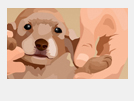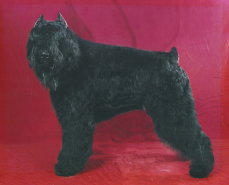About THE BARK STATION PET SALON and reviews
The Bark Station has been a friendly all-breed dog grooming salon in Burlingame, CA for nearly 30 years. We've built ourselves a reputation for having a laid back staff of friendly professionals who have a gentle touch when handling our furry customers. We believe the reputation is well-deserved!
Hypoallergenic baths – trimming – ear cleaning – full pet pampering!
Check out some before & after shots of our furry patrons!
We aren't a mass production pet salon; we take care of the animals as if they were a member of our family and ensure they're all individually handled, never cage dried, and never overheat. Your dog deserves a day of pampering, so make an appointment at the Bark Station today! If time is of the essence, a pre-scheduled appointment can result in a fast turnaround of as short as 2 – 3 hours. You would be called to retrieve your furry friend!
The owners of the Bark Station also breed gorgeous Norwegian elkhounds and specialize in trimming Bouviers (we're one of the few shops in the area that can have them looking their best!). We offer generous business hours to accommodate your schedule, so contact us to find out about our availability.
The Bark Station Pet Salon has been in the same location in Burlingame, CA for nearly 30 years and has pampered many furry tailed friends! Our head Groomer has trained and worked by the side of a Master Groomer for many years, picking up the best trimming and grooming techniques on the market.
Reviews:
Renee C.
Bark Station is my easy great place to go. I have trusted them with my dogs for 2decades. They always find an appointment for me with sometimes short notice.They do an EXCELLENT job grooming. My dogs are happy and healthy when I pick them up.They are caring, efficient, clean, organized, and reasonably priced for the high quality service they provide. I wish they would cut my hair.5 stars is not enough.
Joey F.
If you have indoor loving dogs, then you know how hard it is to find a great place to get their nails trimmed. I wish I could do it myself, but both of my dogs think I am trying to remove their entire foot! So it is better left to a professional.I was surprised when I found Bark Station. It is near my home and was able to walk. I decided to call in and make sure I didn't need an appointment and was told on the phone to just bring the dogs by during their hours and they'd take care of them.So I walk the dogs to the shop later that day. When we entered we received prompt and friendly service. They came out to gather the dogs and you could see how much they care for animals. My dogs usually get nervous with strangers, especially ones that come from a pet store of sorts. But this time, they were very happy.It took only about 5 minutes to have both pets nails trimmed. And it cost only each! Compared to some of the other places I have gone, this is a great deal, and the quality is at the top!
Ruby R.
They do a REALLY great job here. We have been bringing our elderly dog here for years and it's the only place she doesn't get stressed out. You can tell how great they treat the dogs here- when you walk in, all the dogs are lined up wagging their tails as they wait for their grooming turn.Anyhow, they are fantastic and we appreciate how gentle they are with the dogs. Their work is excellent.
Ramiro Z.
This is a great place to bring your dog for Grooming. It's our first time coming here (a friend recommended them) and we are very happy and impressed with their service. I love the fact that they understand how important a pet is to a family and they made him look his best. Hermelindo is the young man that took care of Eddy "our pet dog" and we are beyond impressed with the results. Thank you so much and see you again in 5 weeks.
john k.
I been going to the bark station for at least 20 yrs. My three Portuguese Dogs have had the best grooming and nothing but the best experience there. I also brought one of my pugs there also.I've tried numerous groomers up and down the peninsula for my dogs and it's was great to find a caring groomer that knows how not to make a PWD not look like a Poodle.John
karl r.
I like they have Saturday appointments available. He does a great job on my Yorkie.I've been going here for about five years now and I have had only great service and great cuts
Danielle L.
My in-law told me about this place so we decided to book an appointment here for our shih-poo. The first time he got a haircut elsewhere, they made him look like Edna from The Incredibles LOL. Thank you to Bark Station for making my fur baby look so cute!
Izzy B.
I've been taking my dog Rocco here for years now. He's a 6lb Yorkie and always leaves looking sharp. One visit, they noticed Rocco's skin drier than usual with a funky smell to it. They let me know and I took him to the vet. He has dry skin issues as it is but never with odor, he had a yeast infection. I am grateful that they take the time to not only groom my dog but notify me if anything seems off about him. This shows that they not only care about their business but also care about their clients.
Gary W.
I don't know how these folks are still in business. They are NEVER open despite what their posted hours are. I've called, left messages with my call back number, and they have yet to return my calls. I've given up.
Julia P.
Bark station is the best pet salon in the Bay Area, we've been to many salons over the years are bark station has the best customer service, turn around time, and leaves our maltipoo looking perfect! They are always able to accommodate us either same day or within the next 1-2 days and are super flexible. Highly recommend for anyone looking for a groomers.
Paul B.
Bark Stn has taken good care of our dogs and I can recommend them without reservation.
P J.
This place was recommended to us. We are new to the area. Very happy with the friendly service. We have a working cocker spaniel and he comes out looking fabulous. Smelling clean without the sickly sweet scents some salons use. Highly recommend this place.
Roger E.
The Bark Station does a great job on my Golden (White) Retreiver. Marlowe loves going there.
K C.
Friendly and did a good job. Very simple groom and bath. Very nice people and seemed quite organized.
Hector S.
Great place to have your pet groomedif ever you need to have your pet groomed-this is the place to go. The prices are fair the staff is wonderful. I have been taking my dog here for over 5 years now and reccomend to all who need a gret place to take their dogs
Megan B.
Big fans! They are always easy to schedule an appointment for my dog. (5 year old multipoo). They are also quick, anywhere from 45 minutes to 2 hours tops. My pup always looks great after her grooming.
Trisha R.
Brought my lab in for a cut and wash and then brought my 2 little dogs in for anal glands. He told me that the little dogs were covered in fleas! I asked if he could wash them today too. He was booked solid, but made room for my little dogs! What a life saver and the prices were great! Also, the woman was very sweet to my dogs. 5 star rating and I'll be going back!
Rosemary V.
First time taking our dog teddy here the price was right and the job was amazing! He was able to fit us in the same day. This place was recommended to us from a family member. Super nice staff! And they even put a scarf on teddy. He was looking super awesome!! Thank you Bark Station Pet Salon!!
Michelle B.
Bark station gave my dog Harper the cutest short haircut! I usually don't let anyone touch her tail due to a previous incident which left her triangle-shaped, but they managed to really clean it up without anything like that happening! The staff was very friendly as well and they even let her sit in the waiting crate with her 2 friends so she wasn't lonely!
Yolanda B.
Hermelindo and Layla do a fantastic job and are very caring and they take care of their furry customers. I have been going there for over 10 years and have always had fantastic results. He just recently told me that my dog was starting an ear infection and sure enough we caught it in time before it got really bad. their place is clean and the prices are reasonable.








